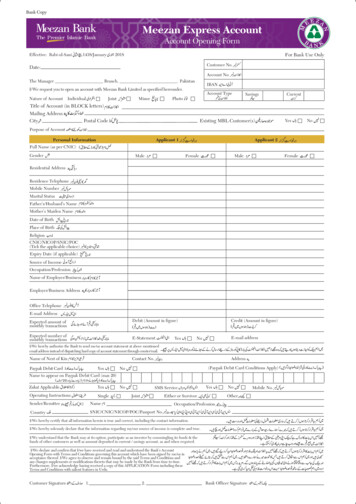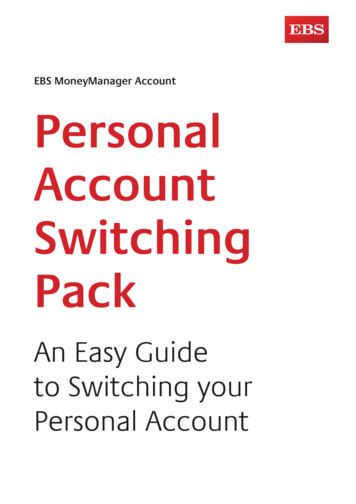
Transcription
EUROPEAN COMMITTEE FOR BANKING STANDARDSIBAN: INTERNATIONAL BANK ACCOUNT NUMBEREBS204 V 3.2 — AUGUST 2003
Document historyEBS204 Version 1November 1996EBS204 Version 2July 2000EBS204 Version 3February 2001EBS204 Version 3.1August 2002 (Changed made in InformativeAnnex)EBS204 Version 3.2August 2003 (Updated references to ISO1361:2003 minor revision) European Committee for Banking Standards. August 2003.Avenue de Tervueren, 12, 1040, Brussels.Not to be copied without attribution, and subject to the restriction under the confidentialityclause below.Comments or enquiries on the document may be addressed to the Secretary General at theabove address.This European Banking Standard is Public, and may be copied or otherwise distributed provided the text isnot used directly as a source of profit.
TABLE OF CONTENTSFOREWORD . 1The International Bank Account Number (IBAN) . 1Design Background . 1Strategic Reason(s) . 2Potential . 2Cross-Border Routing . 31INTRODUCTION . 52SCOPE . 53NORMATIVE REFERENCES . 54DEFINITIONS. 64.1 Basic Bank Account Number (BBAN) . 64.2 Capture of IBAN . 64.3 Generation of IBAN . 64.4 International Bank Account Number (IBAN) . 64.5 Transfer of IBAN. 65THE IBAN FORMAT . 75.1 The electronic format. 75.2 The paper format . 75.3 Examples of IBANs . 76CALCULATION AND VALIDATION OF THE CHECK DIGITS . 86.1 Method of validating the check digits . 86.2 Method of calculating the check digits . 86.3 Alpha to numeric conversion table . 97OPERATIONAL RULES & GUIDELINES . 12INFORMATIVE ANNEX . 13
ECBS EBS204 V3.2 [August 2003]Foreword — 1FOREWORDTHE INTERNATIONAL BANK ACCOUNT NUMBER (IBAN)The IBAN concept was developed by ECBS and by the InternationalOrganization for Standardization (ISO) and is an internationally agreed standardISO 13616: 2003.It was created as a viable and practical international bank identifier, usedinternationally to uniquely identify the account of a customer at a financialinstitution, to assist error-free cross-border payments, and to improve thepotential for straight through processing1 (STP), with a minimum amount ofchange within domestic schemes.It was not specifically designed to facilitate the cross-border routing ofmessages within a network.DESIGN BACKGROUNDThe IBAN was designed within the background of growing pressure to improvethe efficiency of cross-border payments in regard to cost, speed and quality.Such improvements require, among other things, easier validation of foreignaccount numbers. The IBAN design provides a standard method to enable thecross-border account number formats to be recognised and validated.In effect, the IBAN is additional information put on the front of the nationalaccount number format2 of each country.Validation is performed by check digits and a single, simple, algorithm. Thealgorithm covers the whole IBAN, and ensures, for example, that individualdigits are not transposed.Recognition is in two parts. The IBAN commences with the ISO 3166 twoletter country code. It is therefore easy to recognise the country in which theaccount is held. Within the national account identifier part of the IBAN, it is animplicit requirement of the ISO standard that the bank be unambiguouslyidentified.1STP means processing a cross-border retail payment from debiting the ordering customer tocrediting the beneficiary customer automatically, i.e. without specific human attention ormanual intervention.2A single international format for the whole account number was an idea rapidly discarded asinfeasible and impractical.ECBS·A V E N U EDET E R V U E R E N 12·1040 B R U S S E L S ·Tel (32 2) 733 35 33·Fax (32 2) 736 49 88E M A I L : ecbs@ecbs.org · http://www.ecbs.org
ECBS EBS204 V3.2 [August 2003]Foreword — Page 2STRATEGIC REASON(S)Customers, particularly private individuals and Small/Medium Sized Enterprises(SMEs), are puzzled when receiving invoices from abroad. They are not familiarwith the different structures of bank/branch and account identifiers in differentcountries. As a result the information they give on payment orders is, in manycases, an incomplete or incorrect set of the data elements required for crossborder STP. The subsequent correction is a major contributor to the significantdifference between the cost of cross-border payments and domestic payments,and also leads to delays.In contrast, the specification of bank and account identifiers on domesticpayment orders is close to 100% correct. Each individual country is effectively acontrolled environment where all of the parties involved in the payment processknow and follow the national standards and operational rules, as a result theappropriate data elements are communicated.The IBAN standard was created to solve the cross-border problem. Whenimplemented and used widely, IBAN will greatly enable the end-to-end STP ofcross-border transfers.POTENTIALThe IBAN is, first and foremost, an account identifier.Its adoption is being driven within Europe, as it is supportive towards monetaryunion and the preparation of a "Euro-domestic" payment system. The IBANcontains all information needed to route a payment order through any nationalclearing system (i.e., national bank code – also called clearing or sorting code –and the account number itself). Thus the IBAN could, given clearing systemchanges, be used to feed inbound foreign payments to the national clearingsystem without any preceding table conversion – as is done today when thebenefic iary's bank is identified by the BIC3 .However, at the present time, there is only a very scant awareness of the ISOstandard worldwide. It will take considerable effort, and an essentially longelapsed time 4 , before IBANs are used in a majority of worldwide cross-bordertransactions.It is therefore somewhat too early to consider IBAN as a cross-border routingtool in the short-to medium term. But it is fruitful to think about the implicationsof adopting the IBAN as a routing tool eventually, in order to create a long-term3The BIC (Bank Identifier Code), also known as the SWIFT code, identifies a bank, e.g.,BANKBEBB, and is defined in ISO standard 9362.4A conservative estimate is between 5 and 10 years.ECBS·A V E N U EDET E R V U E R E N 12·1040 B R U S S E L S ·Tel (32 2) 733 35 33·Fax (32 2) 736 49 88E M A I L : ecbs@ecbs.org · http://www.ecbs.org
ECBS EBS204 V3.2 [August 2003]Foreword — 3strategic plan.CROSS-BORDER ROUTINGBanks want to avoid intermediaries in order to reduce the time taken inprocessing commercial payments to a minimum. Consequently they wish toaddress payment messages directly to the beneficiary's bank or, in the case ofmass payments, to a preferred correspondent bank in the country of thebeneficiary's bank.The BIC code of the beneficiary’s bank will be required alongside the IBANbecause the IBAN cannot be used as a routing tool until:-there is a wide-spread adoption of IBANs across the world;-IBANs are validated on input of payment orders/credit transfers forprocessing;-the routing mechanisms are generally able to recognise and interpretIBANs from all over the world.The routing mechanisms will need to be able to interpret all IBANs to optimisenetwork routing. As a first, simple, stage they will need to recognise the countrycode. At the second, more sophisticated, stage they will need to recognise thebank identification within that country by understanding the various nationalformats5 .The routing mechanism operating outside the destination country initially onlyneeds to recognise the destination country from the IBAN, in order to pass thetransaction cross-border. The ordering bank then has the choice of sending thepayment to their contractual partner in that country (mass payments), or sendingthe payment direct to the beneficiary’s bank on establishing its identity within thedestination country (direct routing). Only the routing mechanism operating insidethe destination country needs to know the full construction of its own country'sBBAN. It also needs access to the authoritative and up-to-date version of itsown country's ‘sort code directory’ or equivalent.5Some national account number format(s) may need adaptation in order to achieve clear andeasy recognition of the account-holding bank. As defined in this standard this means foreach country, that the bank identification is:-in a fixed position in the BBAN (Basic, or national, Bank Account Number-has a fixed length-is unique by bank.For example, the UK and Netherlands have already prefaced their national account numberformat with the first four letters of the BIC in order to give the clarity required by thestandard.ECBS·A V E N U EDET E R V U E R E N 12·1040 B R U S S E L S ·Tel (32 2) 733 35 33·Fax (32 2) 736 49 88E M A I L : ecbs@ecbs.org · http://www.ecbs.org
ECBS EBS204 V3.2 [August 2003]Foreword — Page 4Until IBAN can be used with confidence as a routing tool, it is essential to relyon the BIC of the beneficiary’s bank as, for example, in S.W.I.F.T. FINmessages. Therefore we have to accept a period while such BIC codes will runalongside IBANs, and the inherent redundancy of the two overlapping concepts,while IBAN adoption spreads across the world. For example, the InternationalPayment Instruction (IPI) described in ECBS document EBS206 supports thecombination of IBAN and BIC. We also have to accept that at some, probablyrelatively distant, future point the banking community will have to convince andrequest S.W.I.F.T. to make the BIC an optional field overriding the IBANrather than a mandatory field regardless of whether the account number is anIBAN or not. (BICs may continue to be required by specific applications, even ifS.W.I.F.T. does not.)ECBS·A V E N U EDET E R V U E R E N 12·1040 B R U S S E L S ·Tel (32 2) 733 35 33·Fax (32 2) 736 49 88E M A I L : ecbs@ecbs.org · http://www.ecbs.org
ECBS EBS204 V3.2 [August 2003]Introduction — 51INTRODUCTIONThis European Standard provides an international standard account identifier, the IBAN(International Bank Account Number) for identifying an account held by a financialinstitution, in order to facilitate automated processing of (cross-border) transactionsthrough:-automatic processing of foreign bank account identifications;-uniform validation of foreign bank account identifications;-easy routing of transactions.The IBAN can be implemented without modification to domestic account numbers oraccount number formats. It achieves this by creating a standard prefix after which thedomestic account number can sit unchanged.2SCOPE2.1This standard conforms in all respect with the IBAN specifications from ISO13616 to which supplementary ECBS specifications are added. These supplementaryspecifications are: alpha characters are in upper case; the IBAN is fixed in length, for each country code prefix; the bank identifier, as contained in the IBAN, is fixed in length and fixed in position,for each country code prefix; a standard format is specified for the paper representation of IBAN.2.2The Standard describes methods of composing and validating IBANs in bothelectronic and paper format.2.3Clause 7 incorporates some general operational rules, which are an inherent partof this ECBS Standard, to be applied in all cases of conformance with the standard.3NORMATIVE REFERENCESISO 3166:Codes for the representation of countriesISO 7064:Data processing - Check character systemsISO 13616:Banking and related services - International Bank AccountNumber (IBAN)ECBS·A V E N U EDET E R V U E R E N 12·1040 B R U S S E L S ·Tel (32 2) 733 35 33·Fax (32 2) 736 49 88E M A I L : ecbs@ecbs.org · http://www.ecbs.org
ECBS EBS204 V3.2 [August 2003]Definitions — Page 64DEFINITIONS4.1BASIC BANK ACCOUNT NUMBER (BBAN)The BBAN (Account Number) is the identifier used by financial institutions inindividual countries as part of a National Account Numbering Scheme(s) whichuniquely identifies an account of a customer at a financial institution.4.2CAPTURE OF IBANThe process of converting an IBAN from paper to electronic format.4.3GENERATION OF IBANThe one time process of creating an IBAN for an account.4.4INTERNATIONAL BANK ACCOUNT NUMBER (IBAN)An expanded version of the Basic Bank Account Number (BBAN) usedinternationally to uniquely identify the account of a customer at a financialinstitution.4.5TRANSFER OF IBANTransport of the IBAN in an operational messageECBS·A V E N U EDET E R V U E R E N 12·1040 B R U S S E L S ·Tel (32 2) 733 35 33·Fax (32 2) 736 49 88E M A I L : ecbs@ecbs.org · http://www.ecbs.org
ECBS EBS204 V3.2 [August 2003]The IBAN format — 75THE IBAN FORMAT5.1THE ELECTRONIC FORMAT5.1.1 Up to 34 contiguous alphanumeric characters containing the followingconsecutive components:-country code : 2 letter country code as specified in ISO 3166, of thecountry in which the bank/branch servicing the IBAN resides;-check digits : 2 digits calculated as specified in clause 6;-Basic Bank Account Number (BBAN): up to 30 alphanumericcharacters, 0-9, A-Z (only uppercase), no separators.5.1.2The BBAN has a fixed length per country.5.1.3 The BBAN includes an explicit identification code of the bank/branchservicing the account at fixed positions within the BBAN, specified per country.5.2THE PAPER FORMATThe paper representation of the IBAN is the same as the electronic formatexcept that the IBAN shall be split up in groups of 4 characters separated by aspace. The last group shall be variable in length, up to 4 characters.5.3EXAMPLES OF IBANSCountryAccount numberBE510-0075470-61FR20041 01005 0500013M026 06Electronic er IBANBE62 5100 0754 7061FR14 2004 1010 0505 0001 3M02 606ECBS·A V E N U EDET E R V U E R E N 12·1040 B R U S S E L S ·Tel (32 2) 733 35 33·Fax (32 2) 736 49 88E M A I L : ecbs@ecbs.org · http://www.ecbs.org
ECBS EBS204 V3.2 [August 2003]Calculation and validation of the check digits — Page 86CALCULATION AND VALIDATION OF THE CHECK DIGITS6.1METHOD OF VALIDATING THE CHECK DIGITSPreliminary stepIf the IBAN is in paper format, convert to basic format by deleting allnon-alphanumeric characters.BE62 5100 0754 7061 becomes BE62510007547061Step 1Move the first four characters of the IBAN to the right of the number.Result 510007547061BE62Step 2Convert the letters into numerics in accordance with the conversion tableunder 6.3.Result 510007547061111462Step 3Apply MOD 97-10 (see ISO 7064). For the check digits to be correct,the remainder after calculating the modulus 97 must be 1.The remainder of the division of 510007547061111462 by 97 16.2METHOD OF CALCULATING THE CHECK DIGITSPreliminary stepCreate an artificial IBAN composed of the country code (ISO 3166)followed by “00” and the BBAN (without non-alphanumeric characters).A Belgian BBAN 510-0075470-61 becomes BE00510007547061Step 1Move the first four characters of the IBAN to the right of the number.Result 510007547061BE00Step 2Convert the letters into numerics in accordance with the conversion tableECBS·A V E N U EDET E R V U E R E N 12·1040 B R U S S E L S ·Tel (32 2) 733 35 33·Fax (32 2) 736 49 88E M A I L : ecbs@ecbs.org · http://www.ecbs.org
ECBS EBS204 V3.2 [August 2003]Calculation and validation of the check digits — 9under 6.3.Result 510007547061111400Step 3Apply MOD 97-10 (see ISO 7064).Calculate the modulo 97 and subtract the remainder from 98. If the resultis one digit, then insert a leading zero.98 - 36 62 so IBAN BE625100075470616.3ALPHA TO NUMERIC CONVERSION TABLEA 10G 16M 22S 28Y 34B 11H 17N 23T 29Z 35C 12I 18O 24U 30D 13J 19P 25V 31E 14K 20Q 26W 32F 15L 21R 27X 33Note: Implementation note for modulo 97 calculationsFor reasons of precision, the use of integers instead of floating point numbers isrecommended. If the number is too long for the software implementation ofintegers (a (signed) integer of 32 bits or 64 bits represents a maximum of 9 or 18digits), then the calculation can be split up into consecutive remaindercalculations on integers with a maximum length of 9 or 18 digits.The remainder of the division of 510007547061111462 by 97 1ECBS·A V E N U EDE-Calculate the modulo 97 of the first 9 (or 18) digits of the number.-modulo 97 of 510007547 74-Construct the next integer of 9 (or 18) digits from the remainder,followed by the next 7/8 (or 16/17) digits of the number. Calculatethe modulo 97.-modulo 97 of 740611114 12-Repeat step 2 until all the digits of the number have beenprocessed.T E R V U E R E N 12·1040 B R U S S E L S ·Tel (32 2) 733 35 33·Fax (32 2) 736 49 88E M A I L : ecbs@ecbs.org · http://www.ecbs.org
ECBS EBS204 V3.2 [August 2003]Calculation and validation of the check digits — Page 10-ECBS·A V E N U EDEmodulo 97 of 1262 1T E R V U E R E N 12·1040 B R U S S E L S ·Tel (32 2) 733 35 33·Fax (32 2) 736 49 88E M A I L : ecbs@ecbs.org · http://www.ecbs.org
ECBS EBS204 V3.2 [August 2003]Operational rules and guidelines — Page 127OPERATIONAL RULES & GUIDELINES7.1Generation of the IBAN shall be the exclusive responsibility of the bank/branchservicing the account.7.2Every capturing system shall validate the IBAN i.e. when transferring the IBANfrom paper to electronic form.7.3The IBAN shall always be transferred completely to the next party in theprocessing chain, at least until the entry-point in the country of the benefic iary.ECBS·A V E N U EDET E R V U E R E N 12·1040 B R U S S E L S ·Tel (32 2) 733 35 33·Fax (32 2) 736 49 88E M A I L : ecbs@ecbs.org · http://www.ecbs.org
ECBS EBS204 V3.2 [August 2003]Informative annex — 13INFORMATIVE ANNEXIt is strongly recommended that creditors use the IPI (International Payment Instruction –EBS206) for communicating the IBAN, their bank’s BIC code and all other relevant datafor submitting credit transfer orders in a structured way to their debtors.While creditors do not (yet) distribute IPIs they should indicate the IBAN as well as theirbank’s BIC on their letterheads and invoices, in the same way as they indicate data likethe account number, telephone number or Chamber of Commerce number.Example:Customer Inc.12, Main StreetCity, Country(no need for explanation; just the data itself)TelephoneChamber of CommerceBank account numberBank’s BICIBAN: 0033 10 12 34 56 78: ABCDE12345678: 18206000103056966400117: AGRIFRPP882: FR76 1820 6000 1030 5696 6400 117The use of a colon to separate the IBAN tag from the IBAN itself should exclude the riskthat the debtor would copy the IBAN tag as part of the IBAN account number.ECBS·A V E N U EDET E R V U E R E N 12·1040 B R U S S E L S ·Tel (32 2) 733 35 33·Fax (32 2) 736 49 88E M A I L : ecbs@ecbs.org · http://www.ecbs.org
format with the first four letters of the BIC in order to give the clarity required by the standard. ECBS EBS204 V3.2 [August 2003] . (International Bank Account Number) for identifying an account held by a financial institution, in order to facilitate automated processing of (cross-border) transactions
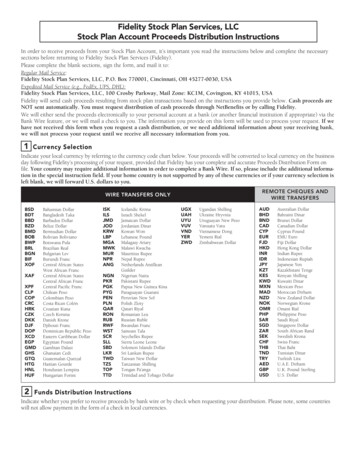
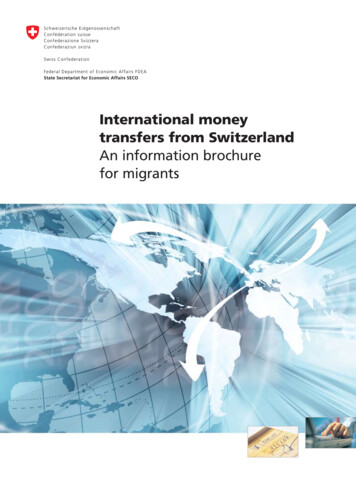


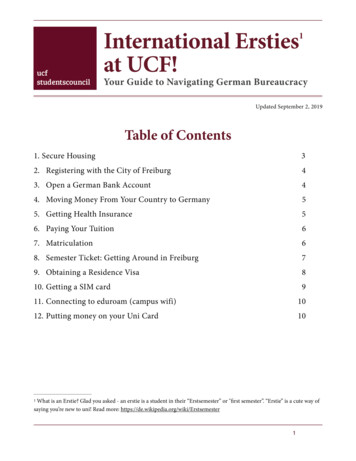
![IBAN [ScreenSystem] [DotShape] Cenacolo Eucaristico in cammino](/img/29/2022-04-giornalino.jpg)
